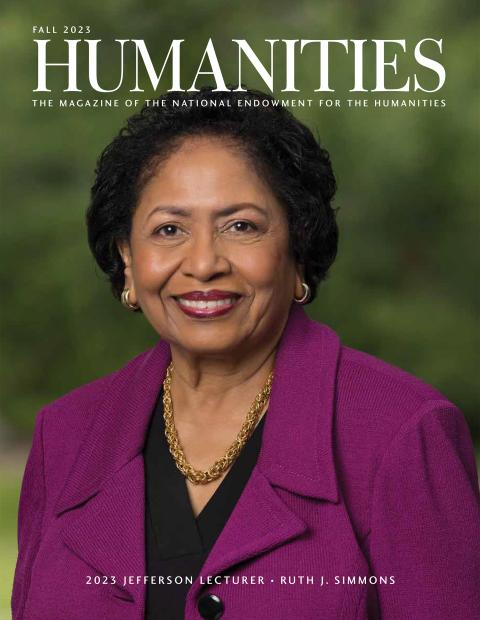Ruth J. Simmons, the 2023 Jefferson Lecturer in the Humanities, was the twelfth child in a family of sharecroppers. She didn’t imagine she’d go to college. Then a teacher helped make that happen. It changed not only her life but many other lives as well.
From Dillard University, an HBCU—historically Black college or university—in New Orleans, Simmons went on to become a French professor and an administrator. She then climbed the highest peaks of professional achievement, becoming the first Black president of Smith College, then the first Black president of an Ivy League school, Brown University. Knowing the difference that college made in her own life, she took seriously the ability of colleges and universities to learn and adapt.
At Princeton, she helped build a program in African American studies that became a well-known brain trust of some of the finest Black thinkers and writers around. At Brown University, she initiated an investigation into the school’s historical connections to the slave trade. At Prairie View A&M, she led this historically Black university through the trials of racial reckoning and the pandemic to a brighter future. In an interview with NEH Chair Shelly C. Lowe (Navajo), Simmons speaks candidly about her dramatic life and career.
Lois Weber was a leader in her own right: A reformer, a writer, and then a well-known director at the dawn of Hollywood filmmaking. Her films began as heavy and moralistic, but during World War I she opened her own studio to focus on lighter, more playful fare. Angelica Aboulhosn revisits this legend of early film.
Roman Vishniac was a photographer known for two types of work so different they might seem incompatible. He visited shtetls in Eastern Europe, producing a body of work famous for its gentle depiction of everyday Jewish life in a world soon to be destroyed by the Holocaust. Mark Athitakis brings into focus, too, how Vishniac used his camera, along with a microscope, to show the inner workings of microorganisms.
Nature, of course, harbors many secrets, one of which, until the nineteenth century, was the so-called problem of American storms. The controversy centered on whether thunderstorms, hurricanes, and blizzards were rotational or centripetal in motion. Alyson Foster takes us back to the days of the telegraph to describe the first stirrings of the National Weather Service.
The Federal Writers’ Project is more famous for its writers than its writing. A New Deal program, it resulted in countless volumes imploring Americans to visit, if only from their armchairs, every state in the union. And these books are weirder and more wonderful than you might realize. Scott Borchert, author of Republic of Detours: How the New Deal Paid Broke Writers to Rediscover America, gives a tour of this extraordinary project in American literature.

